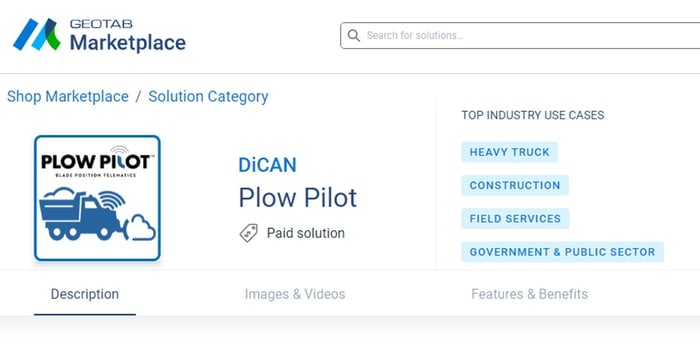
Table of Contents
If you manage a municipal or commercial fleet, you know how important preventive maintenance is. Missed oil changes, overlooked inspections, or delayed repairs can quickly lead to higher costs and unexpected downtime.
To make maintenance easier, Geotab has launched its new Maintenance Center. This tool brings together schedules, reminders, work requests, and work orders into a single hub. On May 21, 2025, DiCAN hosted a webinar to walk through how fleets can use it.
This guide covers everything you need to know about the new Geotab Maintenance Center.
Webinar Video
What is the Geotab Maintenance Center?
The Geotab Maintenance Center is a new all-in-one platform inside MyGeotab that replaces the old maintenance tools (reminders, records, and upcoming service).
Instead of switching between screens, you now have:
- A central hub for schedules, requests, and work orders.
- Historical data preserved (old reminders and records are automatically converted to completed work orders).
- Clearer visibility into both preventive maintenance and unplanned repairs.
In short, it is designed to give fleet managers better control, less paperwork, and fewer missed services.
How to Use Geotab Maintenance Schedules
Preventive maintenance is still the backbone of the system. In the new Maintenance Center you can:
- Create schedules for recurring service such as oil changes, inspections, and tire rotations.
- Apply schedules to individual vehicles or groups.
- Track based on time, mileage, or engine hours, with multiple criteria available.
- Set up notifications so staff are alerted before service is due.
Geotab also provides default predictive schedules. For example:
- Electrical System Rating Insight warns when battery health drops below a safe threshold.
- Oil Life Remaining predicts oil change intervals based on driving behaviour, not just mileage.
This predictive approach means you can service vehicles when they actually need it, not just on a fixed schedule.
Work Requests and Work Orders Explained
Unplanned repairs are inevitable. That is where work requests and work orders come in.
- Work Requests are created manually or pulled from schedules. For example, if a defect shows up in a DVIR, it can become a request.
- Work Orders group one or more requests for the same vehicle. Each order includes jobs, costs, notes, and attachments.
Work orders also include severity levels:
- Low = upcoming service
- Medium = due within 500 km, 50 engine hours, or 10 days
- High = overdue
- Dynamic = requires a custom due date or threshold
This makes it easier to prioritize which repairs need attention first.
Tracking Jobs and Maintenance Costs
Inside a work order, you can track every job in detail:
- Start and completion times
- Labour hours and parts
- Costs per job or full work order
- Invoices, photos, or service notes
Once a work order is closed, Geotab automatically updates the odometer and engine hours. This ensures future schedules reset correctly and your fleet records stay accurate.
Maintenance Reporting and Data Import
The new system includes reporting tools to track maintenance activity:
- Standard reports for quick overviews
- Advanced reports with filters for status, due dates, vehicles, or severity
- Export to Excel for further analysis
If your fleet is moving from another maintenance system, you can also use bulk upload to import historical maintenance records with Geotab’s Excel template.
What Features Are Coming Next?
The Maintenance Center is still in beta, and more features are planned, including:
- Automatic work requests from engine fault codes
- Work requests created from DVIR inspections
- Expanded VMRS coding for more detailed job types
- API integrations with third-party maintenance systems
- Driver visibility in the Geotab Drive app
These additions will make Geotab even more powerful as a fleet maintenance platform.
Common Questions About Geotab Maintenance Center
Can drivers see maintenance schedules in Geotab Drive?
Not yet, but this feature is on the roadmap.
Can I automatically send maintenance reports to my team?
Yes. Reports can be created, customized, and scheduled for automatic email distribution.
Does the Maintenance Center replace my existing history?
No. Your old reminders and records are preserved as completed work orders.
Why the Geotab Maintenance Center Matters for Fleets
The new Geotab Maintenance Center makes it easier to:
- Centralize all maintenance tasks in one place
- Stay ahead of preventive maintenance schedules
- Capture unplanned repairs and link them to work orders
- Track costs and compare in-house versus outsourced service
- Prepare for more predictive and automated maintenance in the future
For municipal fleets, contractors, and private operators, this means less downtime, lower costs, and a longer vehicle lifecycle.
Next Steps
The Geotab Maintenance Center is already live in MyGeotab, with more features rolling out in 2025. If your fleet wants to simplify maintenance and get better reporting, now is the time to start exploring it.





